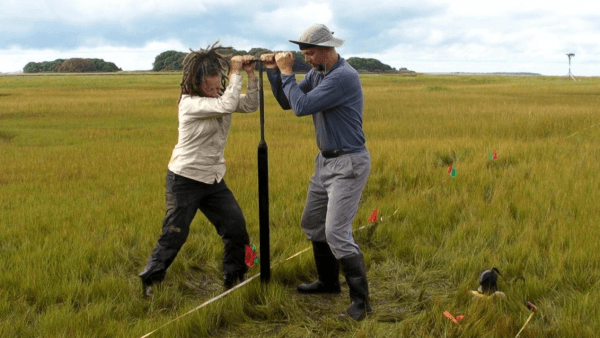During the 18th century, sea levels along a stretch of the Atlantic coast of North America were rising almost as fast as they were during the 20th Century, reveals a new study by researchers at the University of York, Woods Hole Oceanographic Institution (WHOI) and colleagues.
The study, published this week in the journal Geophysical Research Letters, found evidence for a multiple-decades-long period of enhanced pre-industrial sea-level rise of about two to three millimeters per year in Nova Scotia, Maine and Connecticut. This is only slightly slower than rates of change in these locations during the 20th century, which were faster than any other century in at least the last 3,000 years. The new findings are based on salt-marsh sediments from the Atlantic coast and from microscopic salt-marsh fossils, which act as “archives” of past sea levels going back hundreds of years.
The researchers say that the large rates of sea-level rise at these locations during the 18th century were natural, and partly related to the North Atlantic Oscillation—a large-scale atmospheric pressure see-saw over the North Atlantic region—and to periods of enhanced ice melt in the Arctic.
Read more at Woods Hole Oceanographic Institution
Image: Margot Saher (left) of Bangor University and Roland Gehrels of University of York work together to obtain a sediment core from Barn Island salt marsh in Stonington, Conn. (Image Courtesy of Roland Gehrels, University of York)


